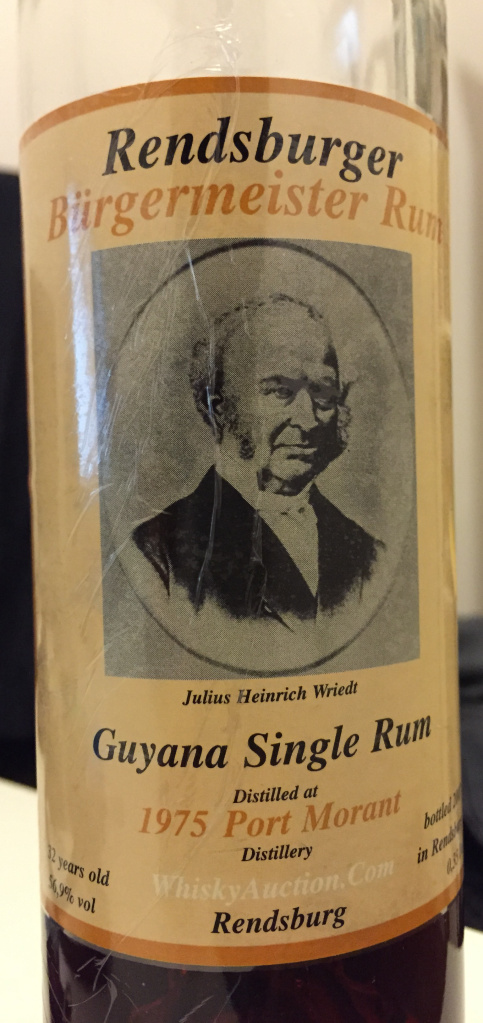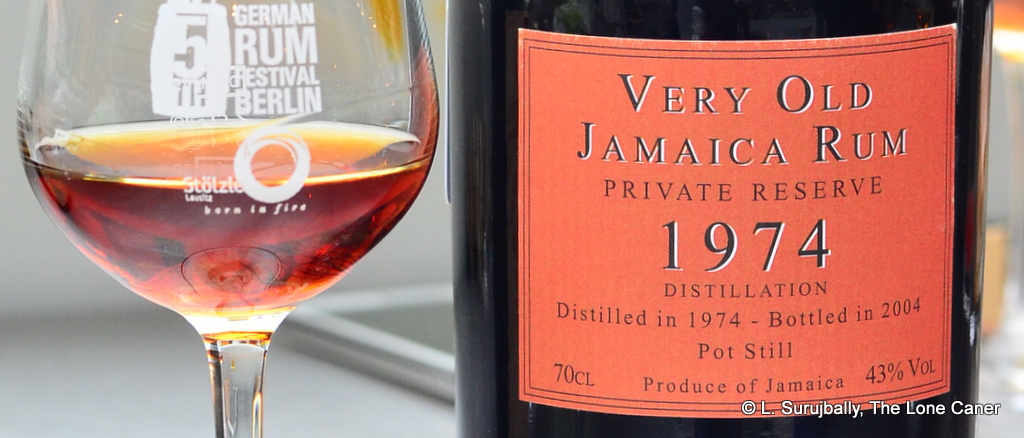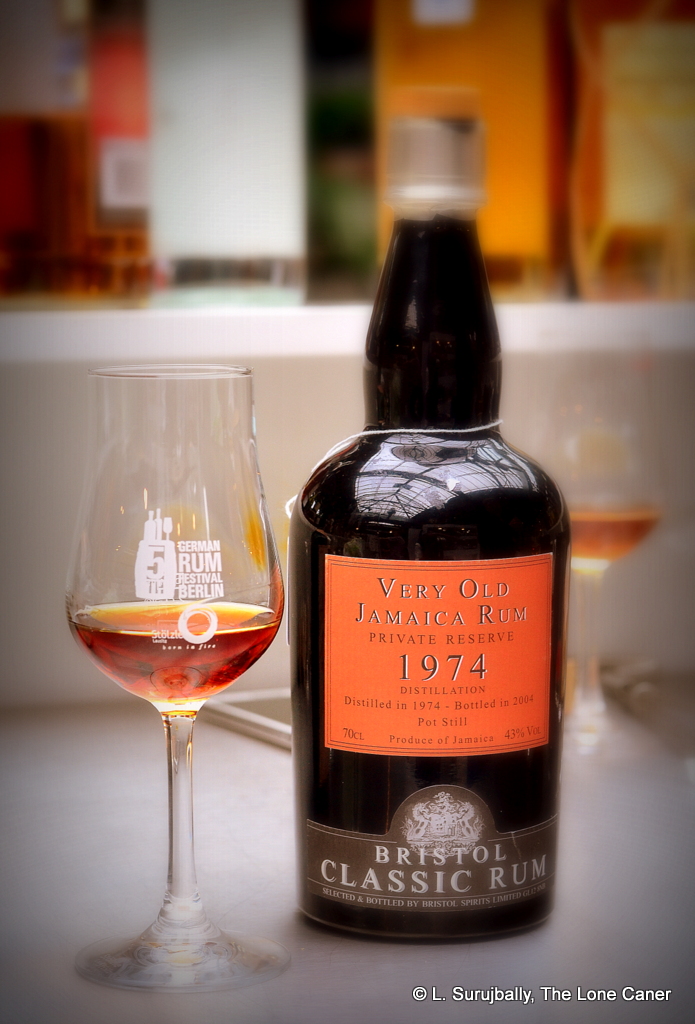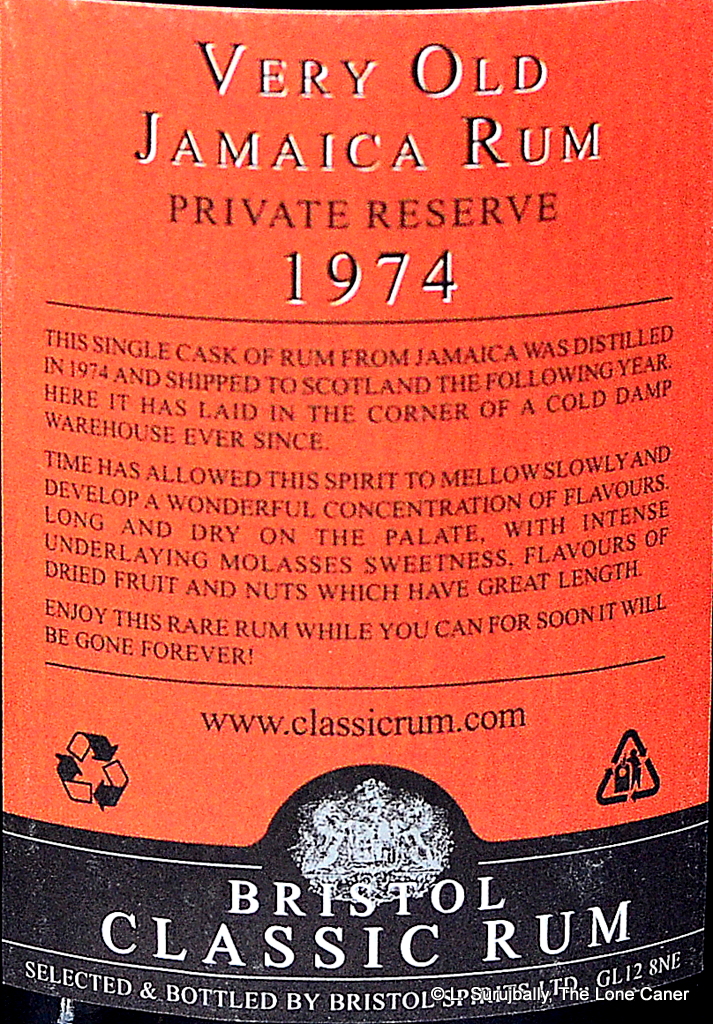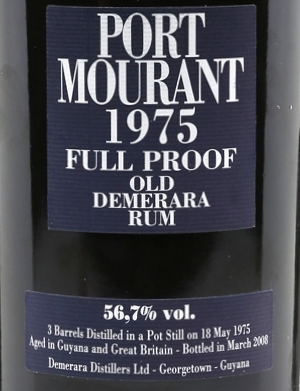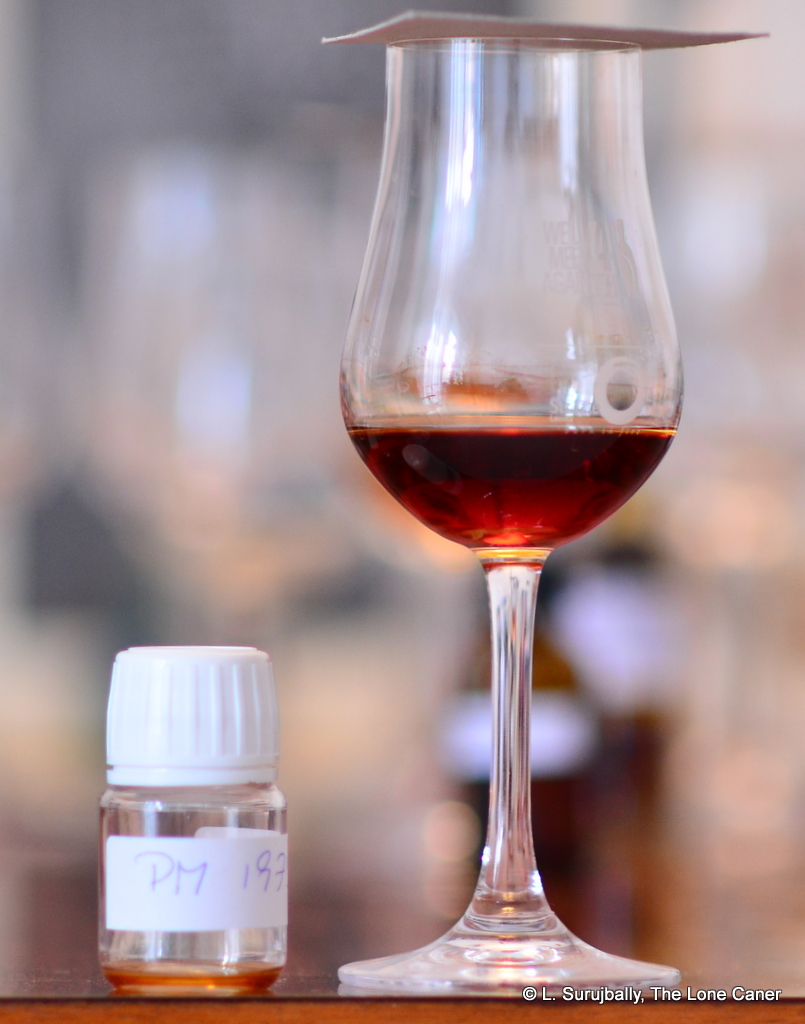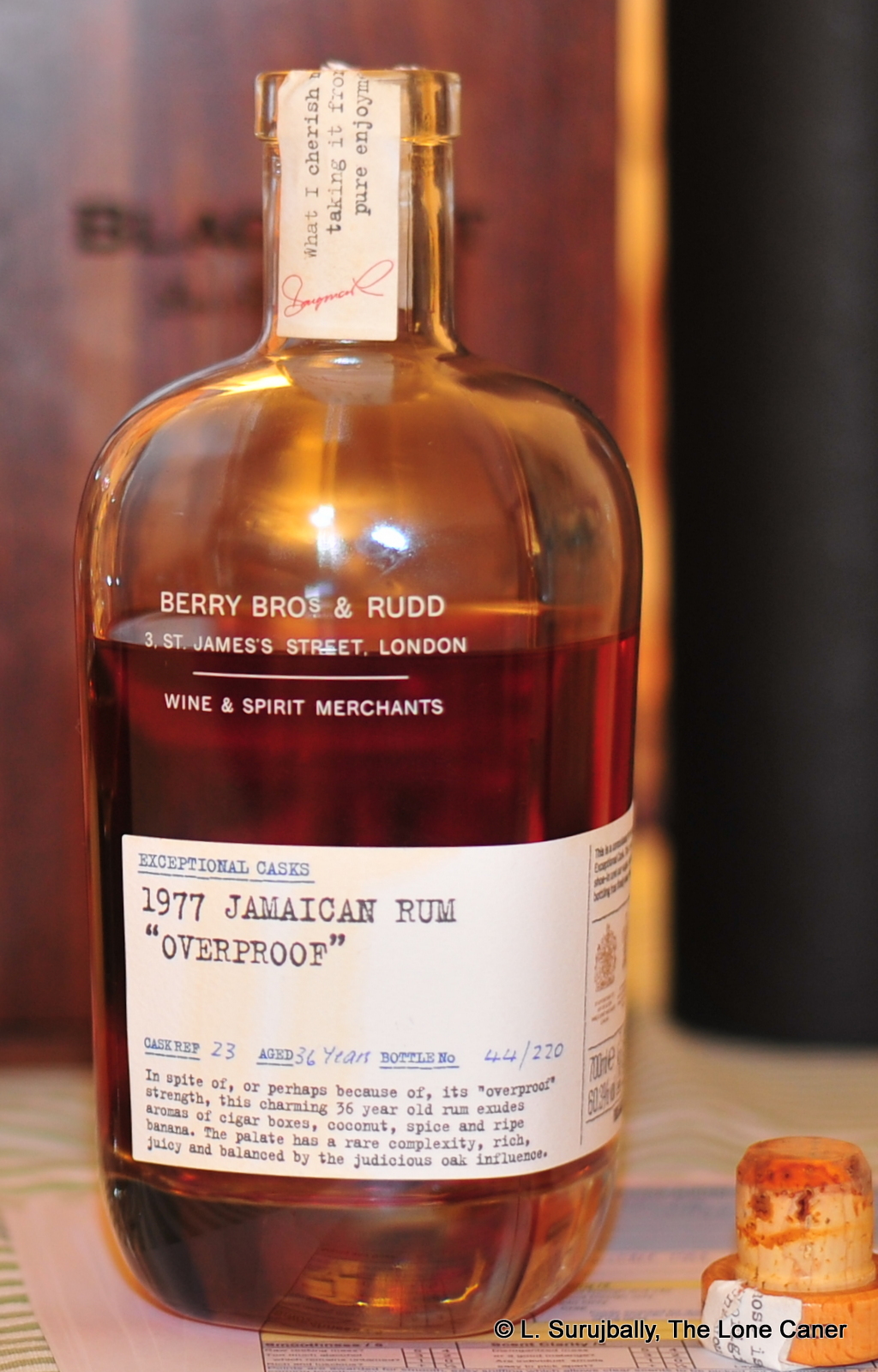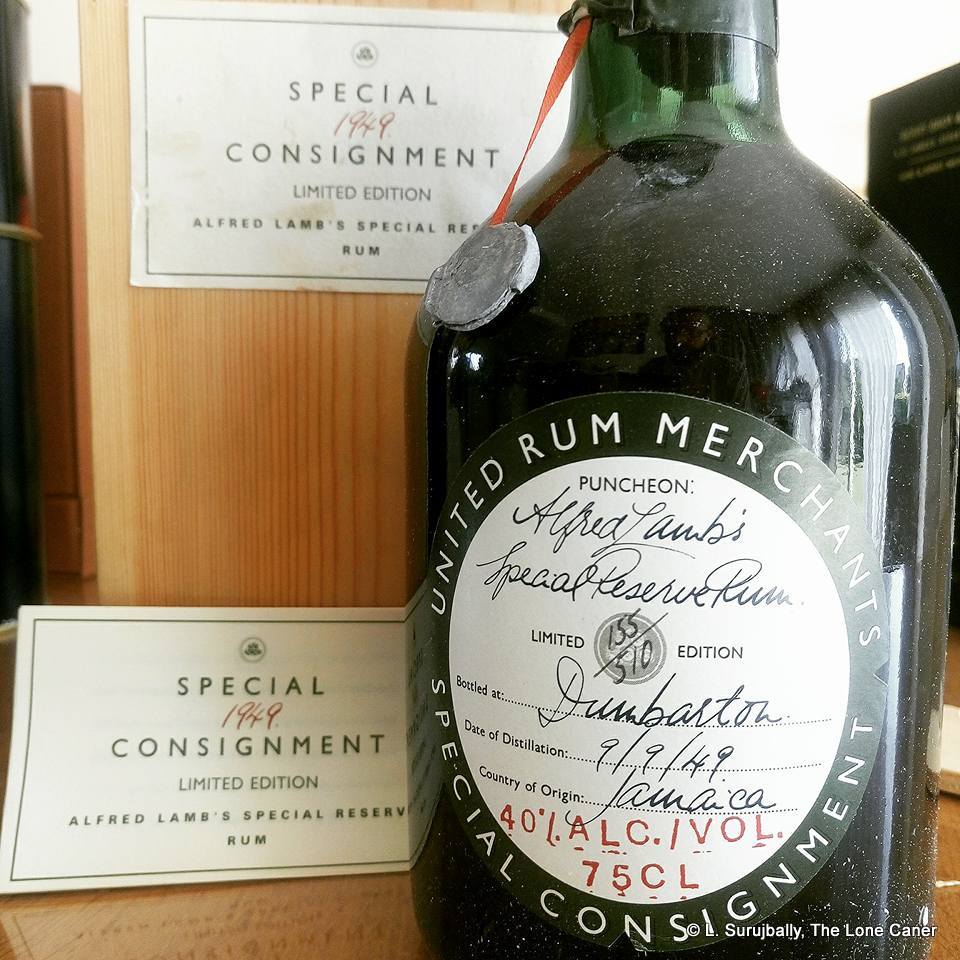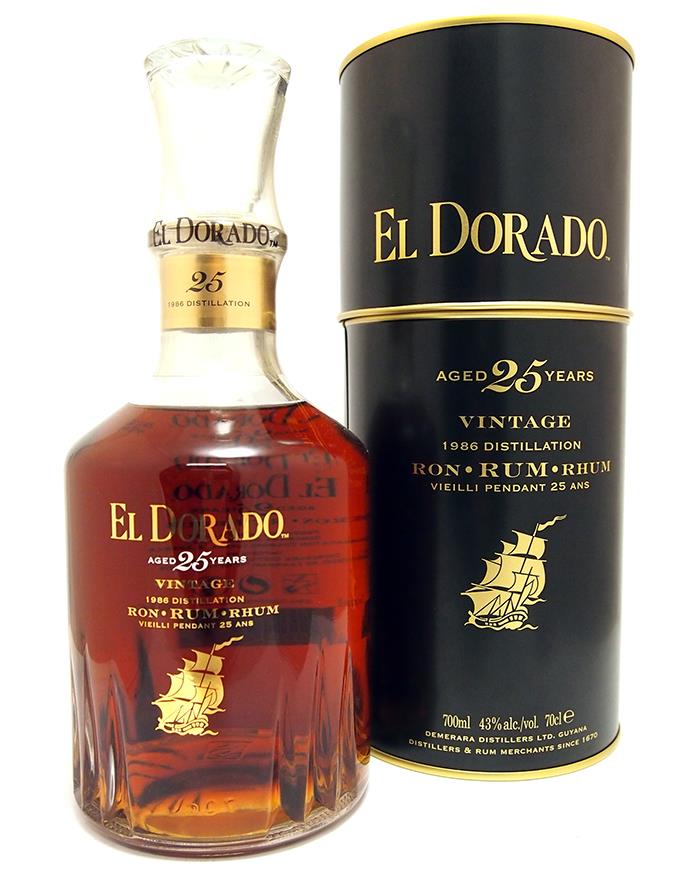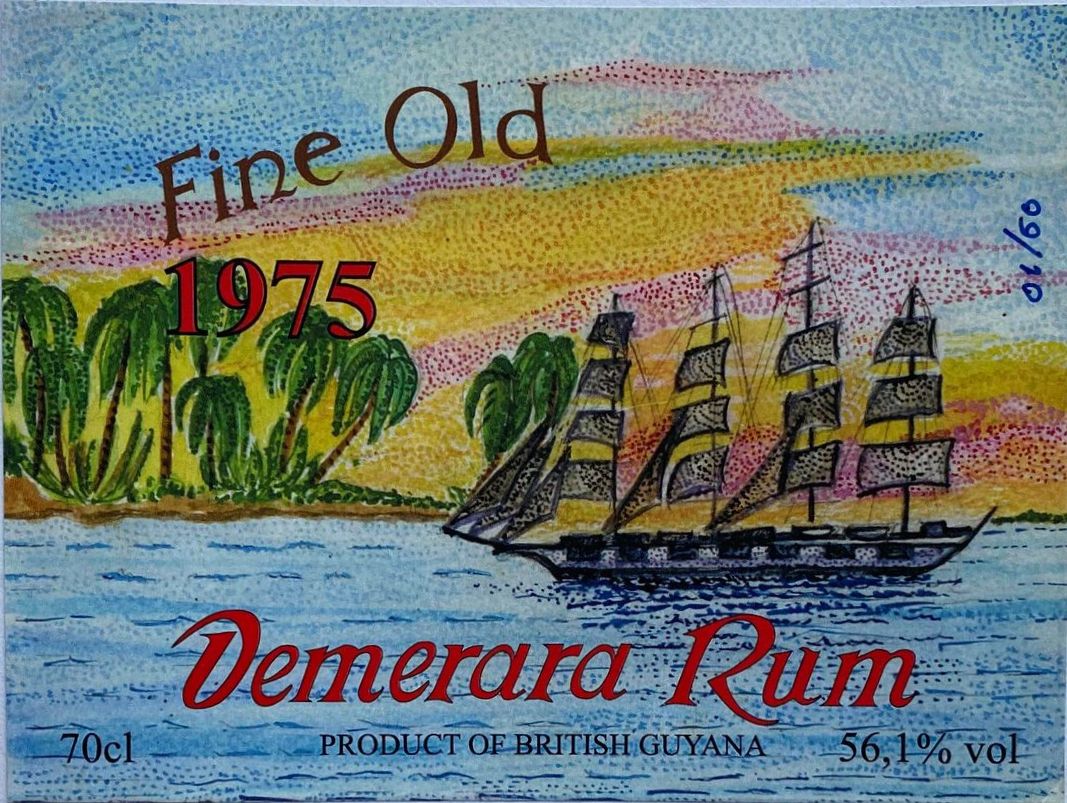
In spite of rums from various 1970s years having been issued throughout that period (many are still around and about and surfacing every now and then at wallet-excavating prices), it is my contention that 1974-1975 were the real years that disco came to town. No other years from the last century except perhaps 1986 resonate more with rumistas; no other years have as many Demeraras of such profound age, of such amazing quality, issued by as many different houses. I’d like to say I’ve lost count of the amount of off-the-scale ‘75s I’ve tasted, but that would be a damned lie, because I remember them all, right back to the first one I tried, the Berry Brothers & Rudd PM 1975. I still recall the rich yet delicate solidity of the Norse Cask, the inky beauty of the Cadenhead Green label 40.6%, the black licorice and sweet tobacco of the Rendsburger, Velier’s own 1975...and now, here is another one, dredged up by another Italian outfit we never heard of before and which, sadly, maybe we never will again. Unlike Norse Cask, it has not vanished, just never bothered to have a digital footprint; in so doing it has left us only this equally overlooked and forgotten bottle of spiritous gold, and some more recent bottlings known only to ur-geeks and deep-divers.
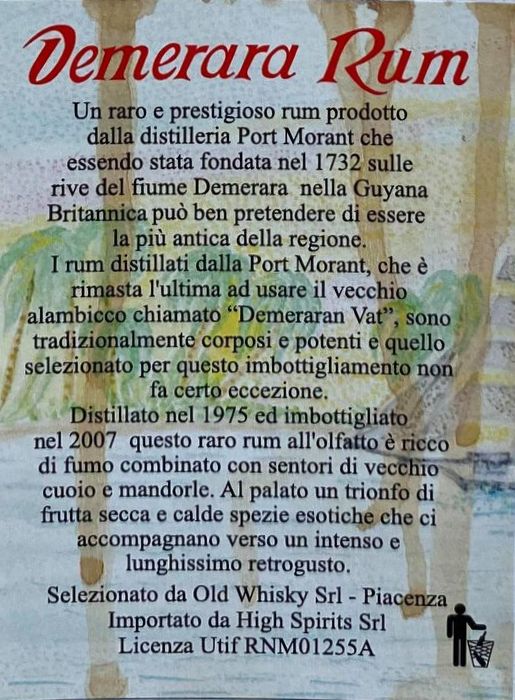 For the kitch, I’m afraid there is not much. Thanks to my impeccably fluent lack of Italian, I can tell you it’s a 1975 Port Mourant that was bottled in 2007, and it appears to be one of those single barrel releases often indulged in by importers – this time an Italian outfit called High Spirits, which doesn’t exist beyond its odd one-page website that leads nowhere and says nothing – see below for some notes on this. The rum is 56.1%, dark red brown….
For the kitch, I’m afraid there is not much. Thanks to my impeccably fluent lack of Italian, I can tell you it’s a 1975 Port Mourant that was bottled in 2007, and it appears to be one of those single barrel releases often indulged in by importers – this time an Italian outfit called High Spirits, which doesn’t exist beyond its odd one-page website that leads nowhere and says nothing – see below for some notes on this. The rum is 56.1%, dark red brown….
…and smells absolutely magnificent. The aromas are, in a word, loaded. The distinctiveness of the PM still comes through in a wave of aromatic wine-infused cigarillos’ tobacco, coffee, bitter chocolate and, yes, licorice. You pause, enjoy this, sniff appreciatively, dive in for Round 2 and brace for the second wave. This emerges after a few minutes: and is more musky, darker in tone shot through with jagged flashes of tarter sharper notes: muscovado sugar, molasses, plums, blackberries, ripe black cherries, bananas, all the best part of, oh, the Norse Cask, of which this is undoubtedly the equal. And then there’s a bit extra for the fans, before the taste: cinnamon, vanilla, herbs, and (I kid you not) even a touch of pine resin.
And the profile, thank God, doesn’t let us down (think of what a waste that would have been, after all this time). People like me use the nose a lot to tease out flavour-notes but the majority of drinkers consider only the taste, and here, they’ll have nothing to complain about, because it continues and underlines everything the smells had promised. Again, thick and pungent with bark and herbs and fruit: plums, dark ripe cherries, ripe mangoes, bags of licorice, and an interesting combo of mauby and sorrel. Caramel and toffee and chocolate and cafe-au-lait dosed with a generous helping of brown sugar and whipped cream, each flavour clear and distinct and outright delicious – the balance of the various soft, sharp, tart and other components is outstanding. Even the finish does the rum honour – it’s long, fragrant and lasting and if it could be a colour, it would be dark brown-red – the hues of licorice, nuts, raisins, dates, stewed apples and caramel.
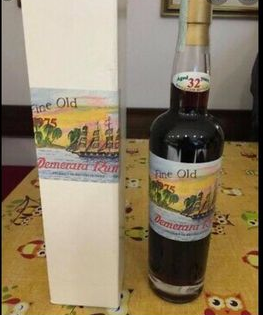 There’s just so much here. It’s so rich, smooth, warm, complex, inviting, tasty, sensual and outright delicious. Just as you put down the glass and finish scribbling what you optimistically think is the final tasting note, you burp and think of yet another aspect you’ve overlooked. Yes, High Spirits probably bought the barrel from a broker or an indifferent Scottish whisky maker who passed it by, but whoever selected it knew what they were doing, because they found and teased out the muscular poetry of the core distillate that in other hands could (and in its knock-offs sometimes does) turn into a schlocky muddled mess.
There’s just so much here. It’s so rich, smooth, warm, complex, inviting, tasty, sensual and outright delicious. Just as you put down the glass and finish scribbling what you optimistically think is the final tasting note, you burp and think of yet another aspect you’ve overlooked. Yes, High Spirits probably bought the barrel from a broker or an indifferent Scottish whisky maker who passed it by, but whoever selected it knew what they were doing, because they found and teased out the muscular poetry of the core distillate that in other hands could (and in its knock-offs sometimes does) turn into a schlocky muddled mess.
At end, over and beyond how it tasted, I find myself coming back to that age. Thirty two years. Such rums are getting rarer all the time. Silver Seal and Moon imports and Cadenhead and G&M occasionally upchuck one or two in the twenties, and yes, occasionally a house in Europe will issue a rum in the thirties (like CDI did with its 33YO Hong Kong Hampden, or those 1984 Monymusks that are popping up), but the big new houses are mostly remaining in the teens, and tropical ageing is the new thing which further suggests a diminution of the majority of aged bottlings. To see one like this, with the barrel slowly seeping its influence into the rum over three decades from a time most rum lovers were unborn and the rumworld we live in undreamt, is an experience not to be missed if one ever has the chance.
(#766)(91/100)
Other Notes
- My thanks to Gregers, Pietro and Johnny for their help on this one, the pictures and background, and, of course, for the sample itself.
- If I read the label right, it’s possible that as few as 60 bottles were issued.
- For a recap of several 1975 Port Mourant rums, see Marius’s awesome flight notes on Single Cask.
- High Spirits is a small Italian importer of whiskies and rums and moonlights as an occasional bottler. It is run by a gentleman by the name of Fernando Nadi Fior in Rimini (NE Italy), and he is an associate and friend of Andrea Ferrari and Stefano Cremaschi of Hidden Spirit and Wild Parrot respectively. High Spirits has quietly and primarily been dealing in whiskies and very occasional limited bottlings of rum since the formation of the company after the dissolution of the previous enterprise, Intertrade Import in the 1970s, but is still mostly unknown outside Italy.
- I’ve often wondered about the prevalence of 1974 and 1975 Guyanese rums, so many of which were Port Mourant, We don’t see 1970s PM rums that often to begin with (Velier has a 1972, 1973 and other years as well, but they’re an exception), yet for some reason these two years seems to be unusually well represented across the various companies’ lines, and I doubt that’s a coincidence. Somehow, for some reason, a lot of barrels from Guyana went to Europe back then and yet for few other years from that decade. Hopefully one day we’ll find out why.
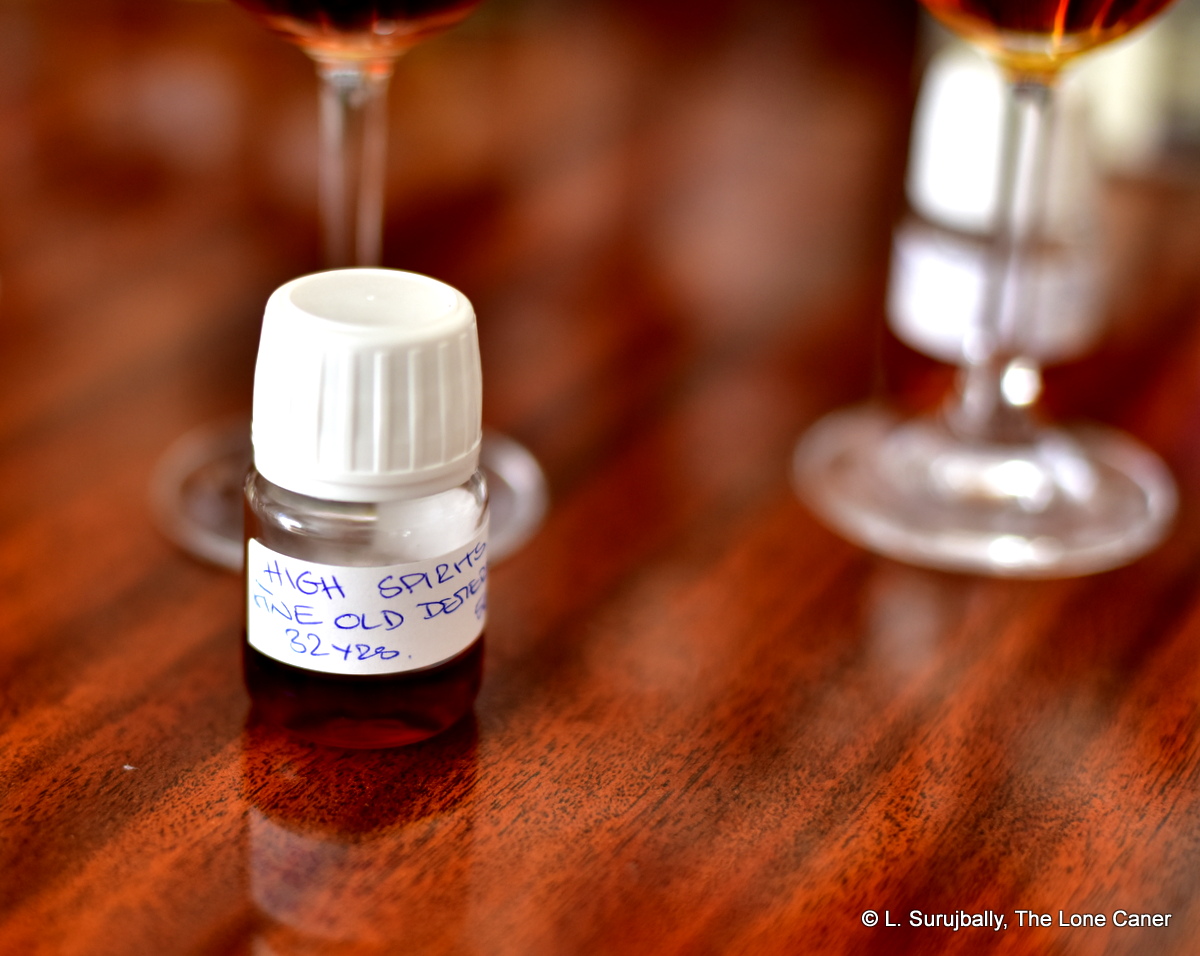
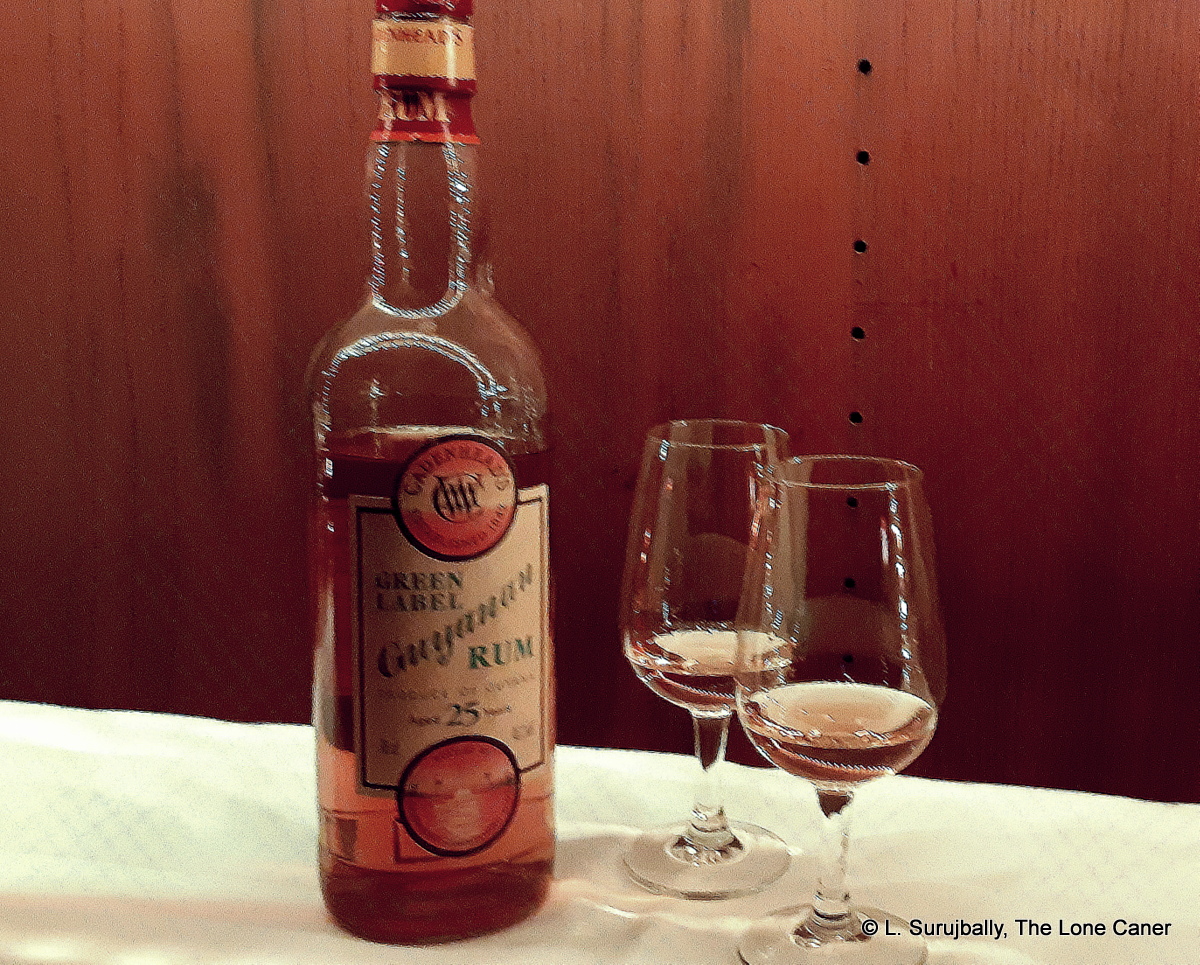
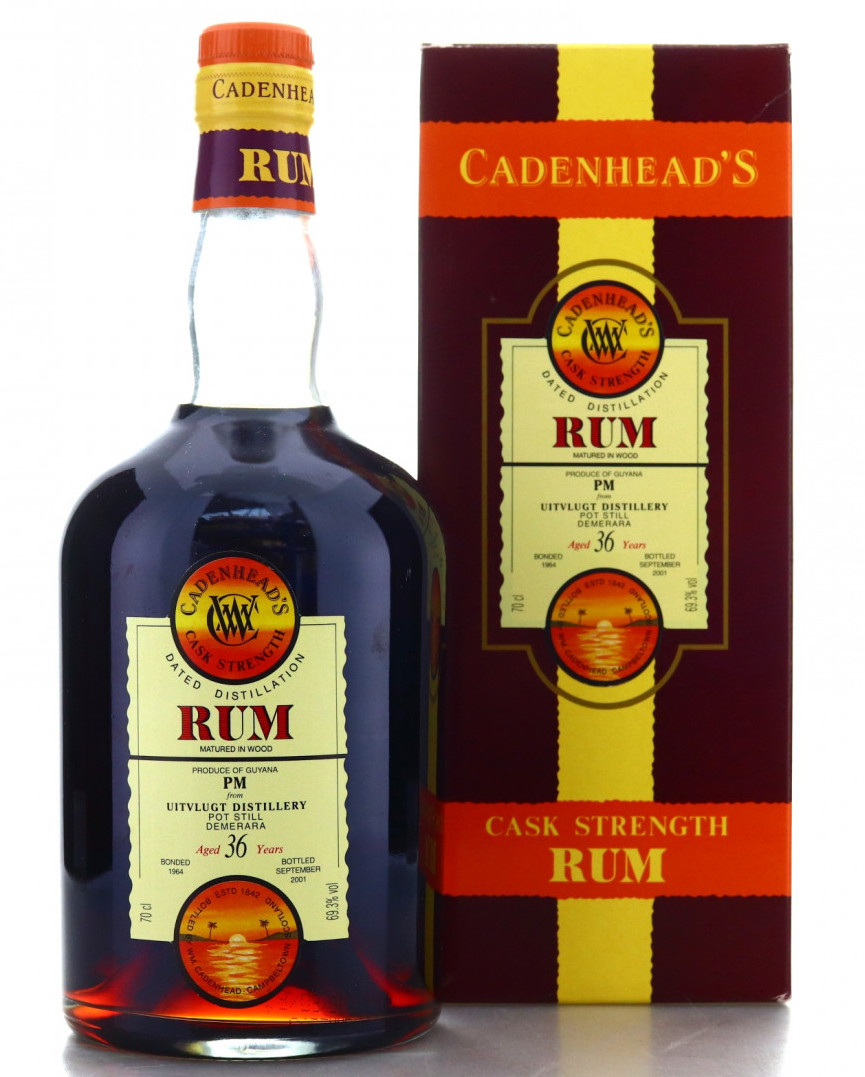
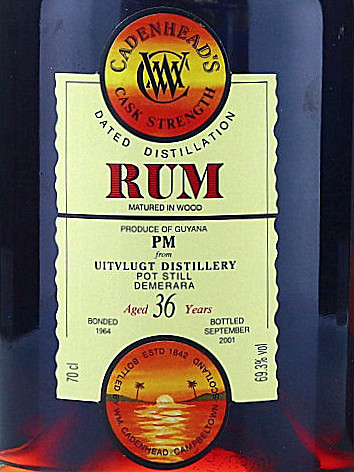 The Cadenhead Uitvlugt 1964 followed all the traditional ways an indie has of producing a rum, except then it proceeded to dial it up to 11, added steroids, horse tranqs and industrial strength factory cleanser, and released it to just about zero acclaim (I mean, have
The Cadenhead Uitvlugt 1964 followed all the traditional ways an indie has of producing a rum, except then it proceeded to dial it up to 11, added steroids, horse tranqs and industrial strength factory cleanser, and released it to just about zero acclaim (I mean, have 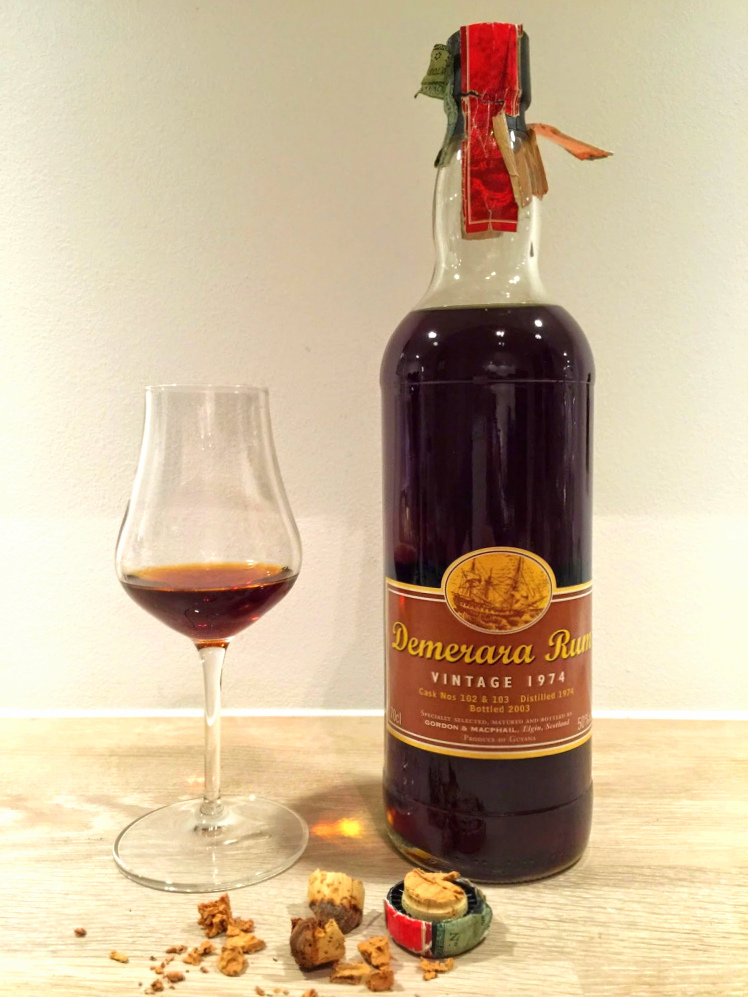
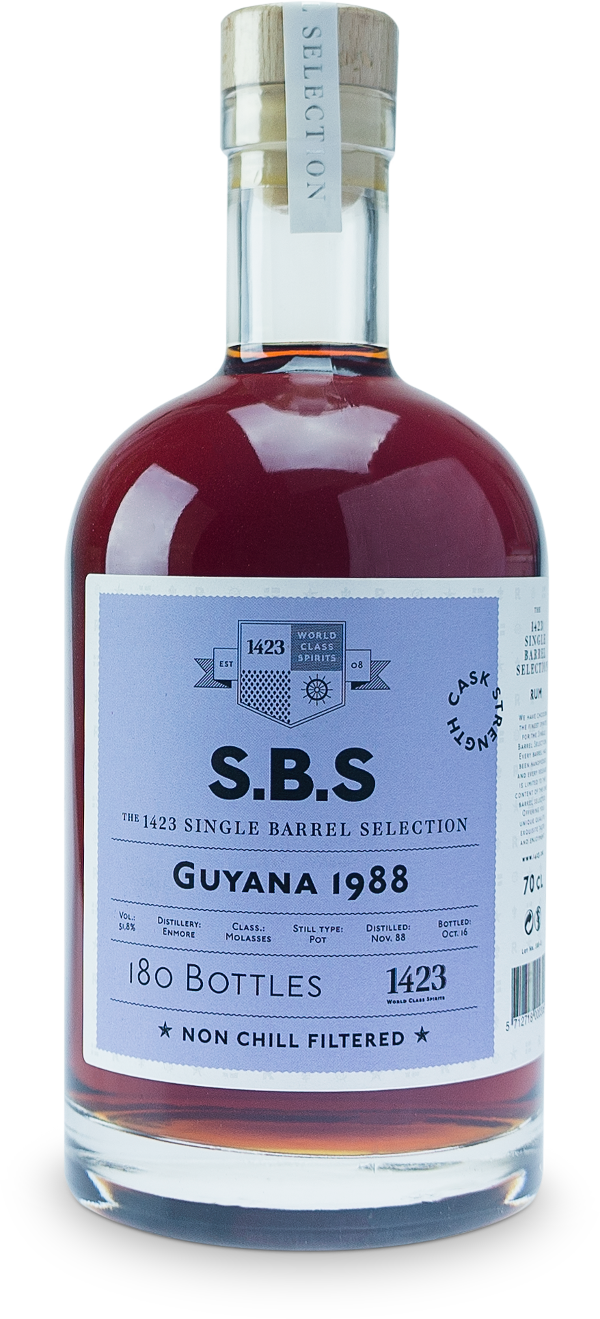
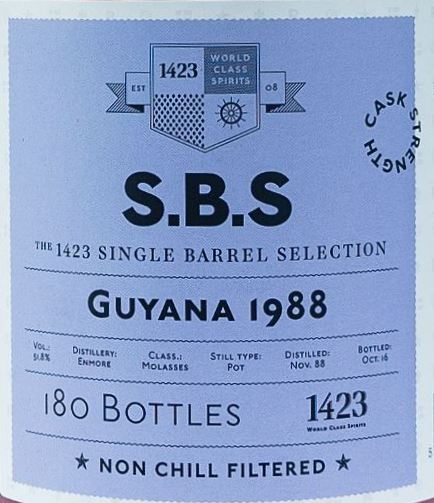 Now, there’s no doubt in my mind that this was as Guyanese as pepperpot and DDL – the real question is, which still made the rum? The label says it’s an Enmore from a pot still, all of SBS’s records (
Now, there’s no doubt in my mind that this was as Guyanese as pepperpot and DDL – the real question is, which still made the rum? The label says it’s an Enmore from a pot still, all of SBS’s records (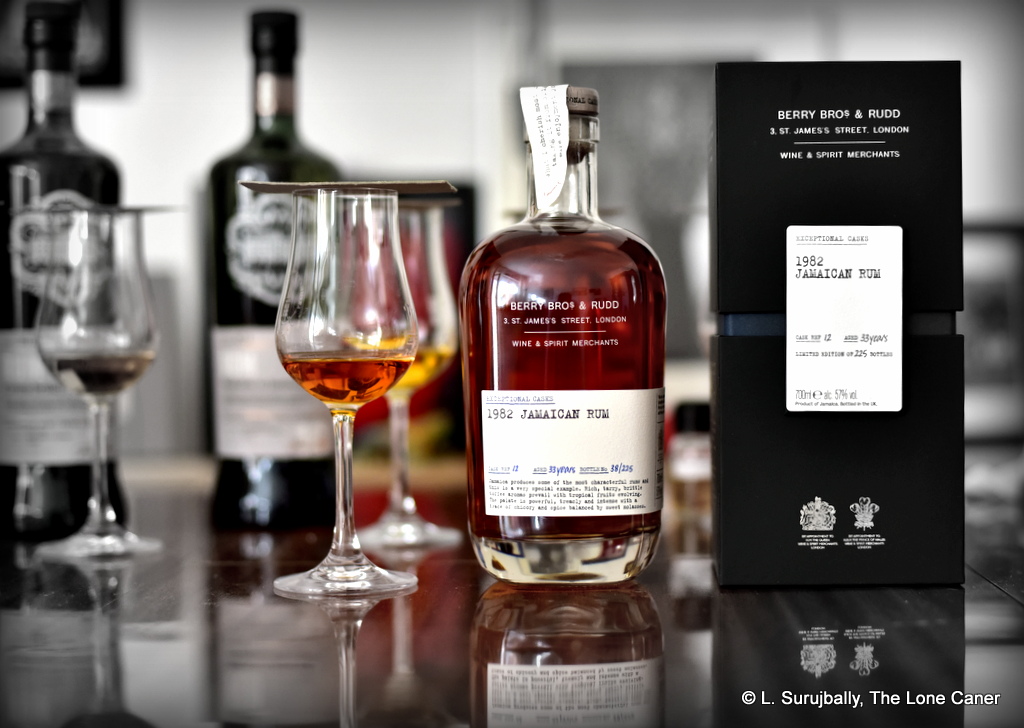
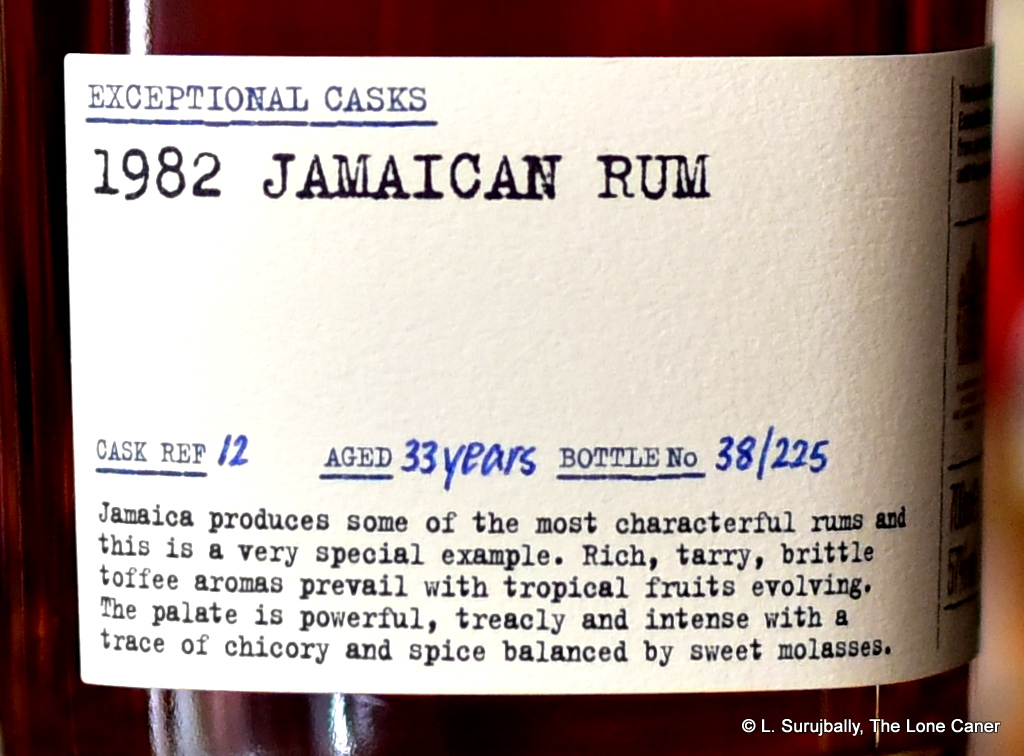
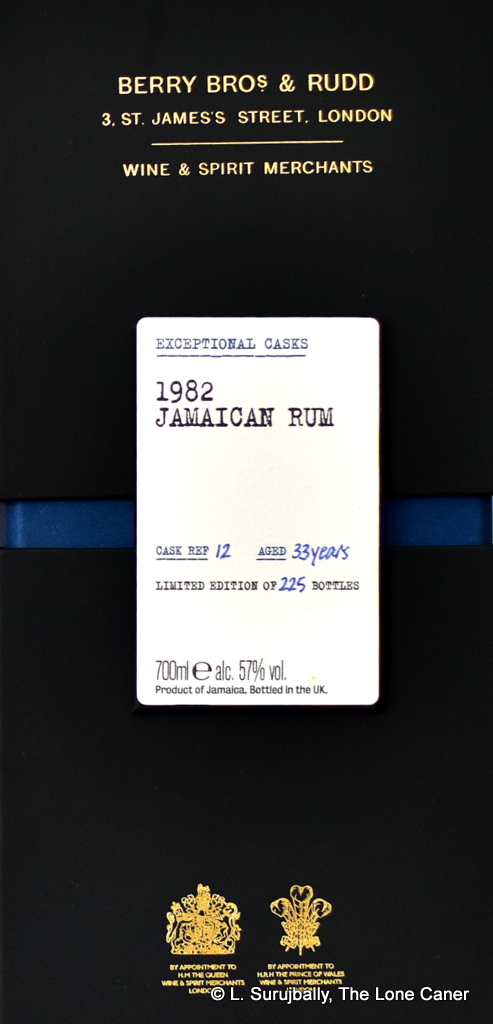
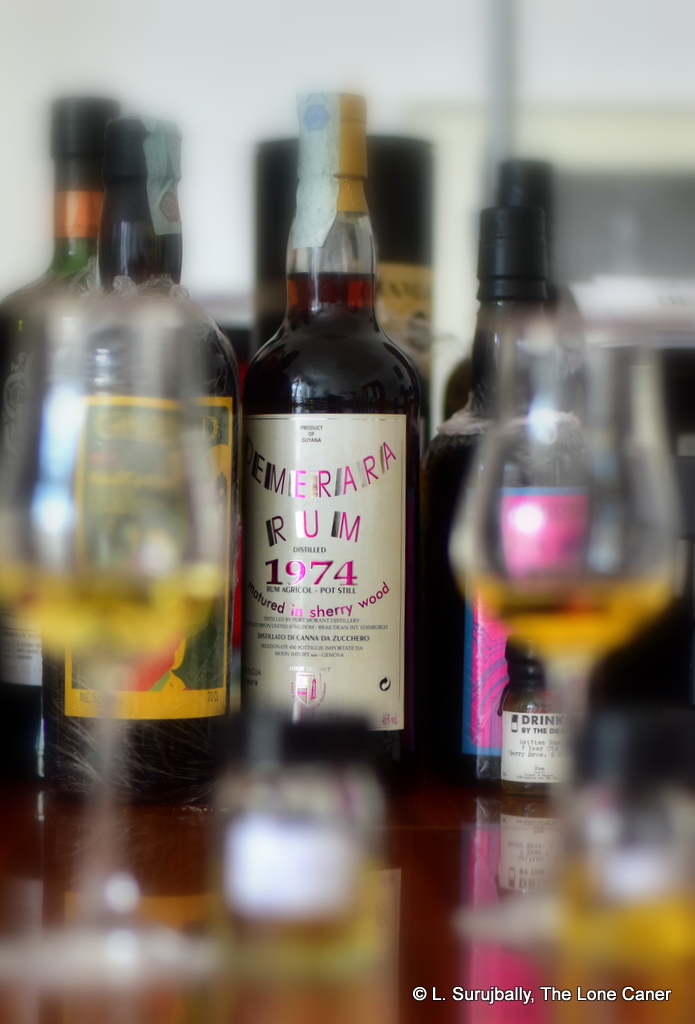
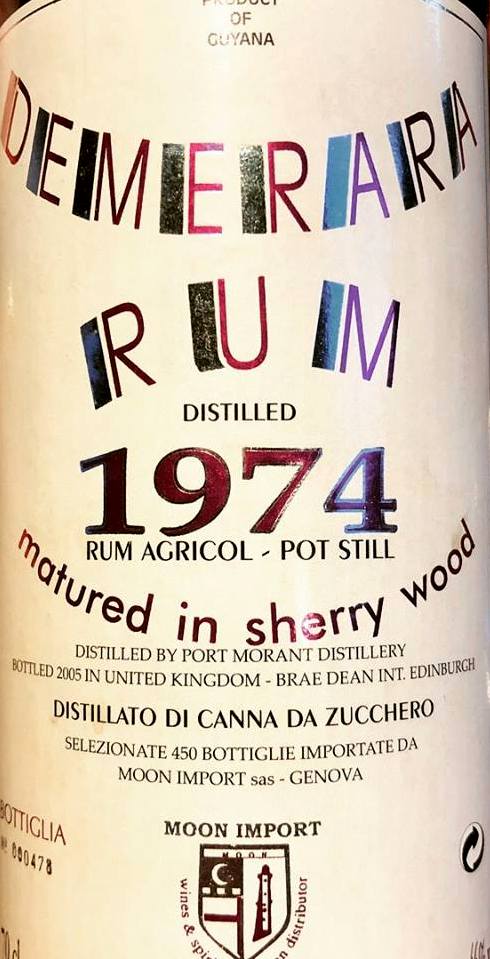 So the search for more info begins. Now, if you’re looking on
So the search for more info begins. Now, if you’re looking on 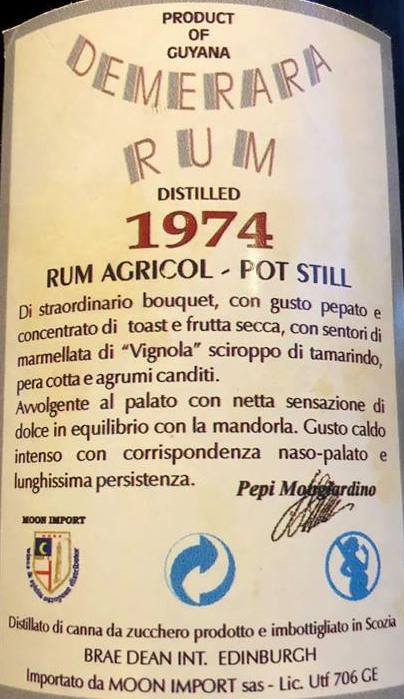 With respect to the palate, at 46%, much as I wish it were stronger, the rum is simply luscious, perhaps too much so – had it been sweeter (and it isn’t) it might have edged dangerously close to a cloying mishmash, but as it is, the cat’s-tongue-rough-and-smooth profile was excellent. It melded leather and the creaminess of salt butter and brie with licorice, brown sugar, molasses and butter cookies (as a hat tip to them barking-mad northern vikings, I’ll say were Danish). Other tastes emerge: prunes and dark fruit – lots of dark fruit. Blackberries, plums, dates. Very dense, layer upon layer of tastes that combined really really well, and providing a relatively gentle but tasteful summary on the finish. Sometimes things fall apart (or disappear entirely) at this stage, but here it’s like a never ending segue that reminds us of cedar, sawdust, sugar raisins, plums, prunes, and chocolate oranges.
With respect to the palate, at 46%, much as I wish it were stronger, the rum is simply luscious, perhaps too much so – had it been sweeter (and it isn’t) it might have edged dangerously close to a cloying mishmash, but as it is, the cat’s-tongue-rough-and-smooth profile was excellent. It melded leather and the creaminess of salt butter and brie with licorice, brown sugar, molasses and butter cookies (as a hat tip to them barking-mad northern vikings, I’ll say were Danish). Other tastes emerge: prunes and dark fruit – lots of dark fruit. Blackberries, plums, dates. Very dense, layer upon layer of tastes that combined really really well, and providing a relatively gentle but tasteful summary on the finish. Sometimes things fall apart (or disappear entirely) at this stage, but here it’s like a never ending segue that reminds us of cedar, sawdust, sugar raisins, plums, prunes, and chocolate oranges.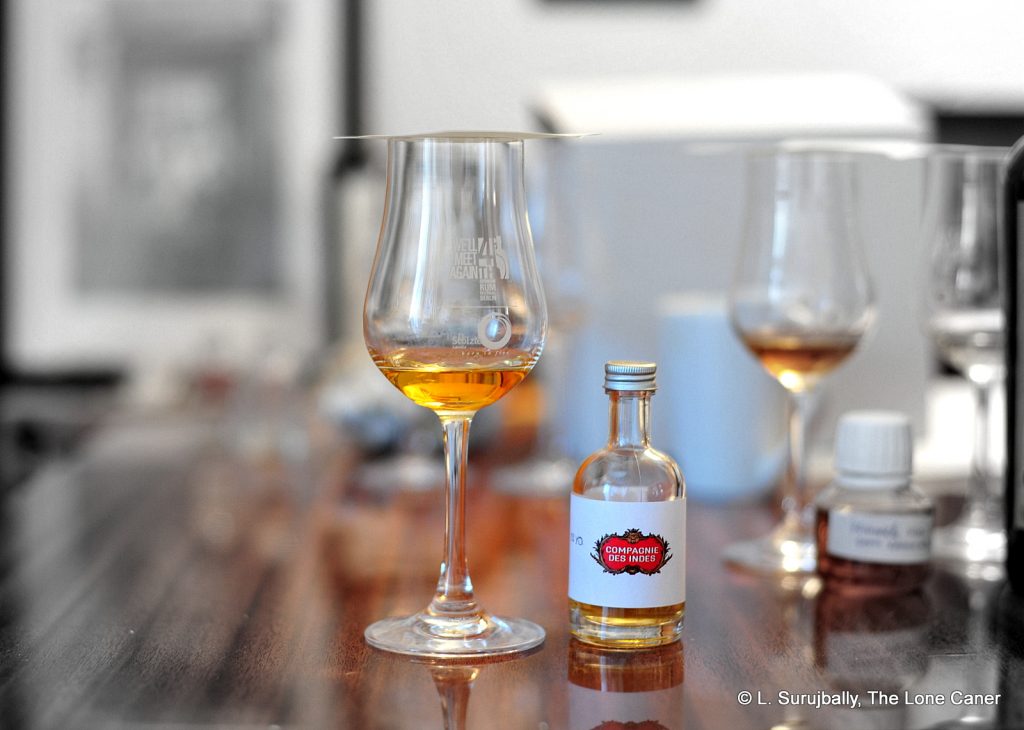
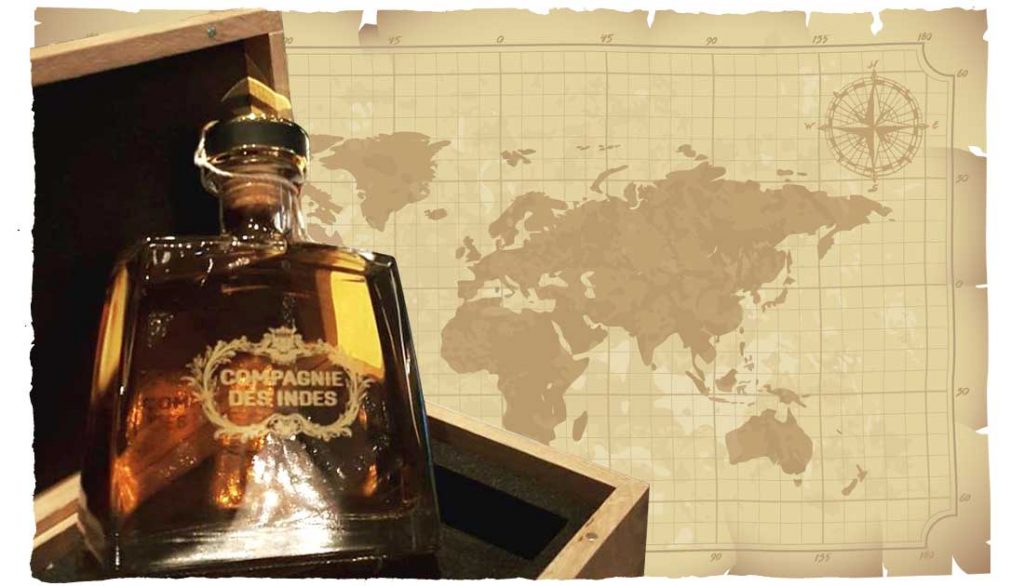
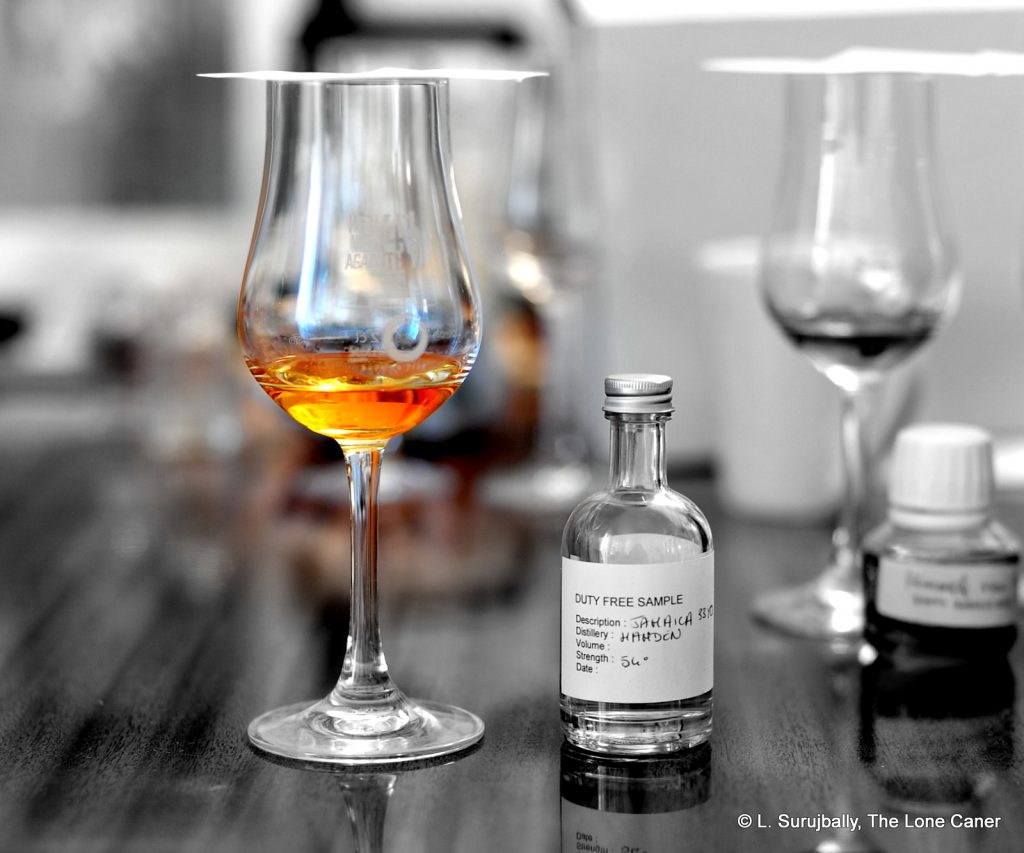
 Rumaniacs Review #84 | 0554
Rumaniacs Review #84 | 0554
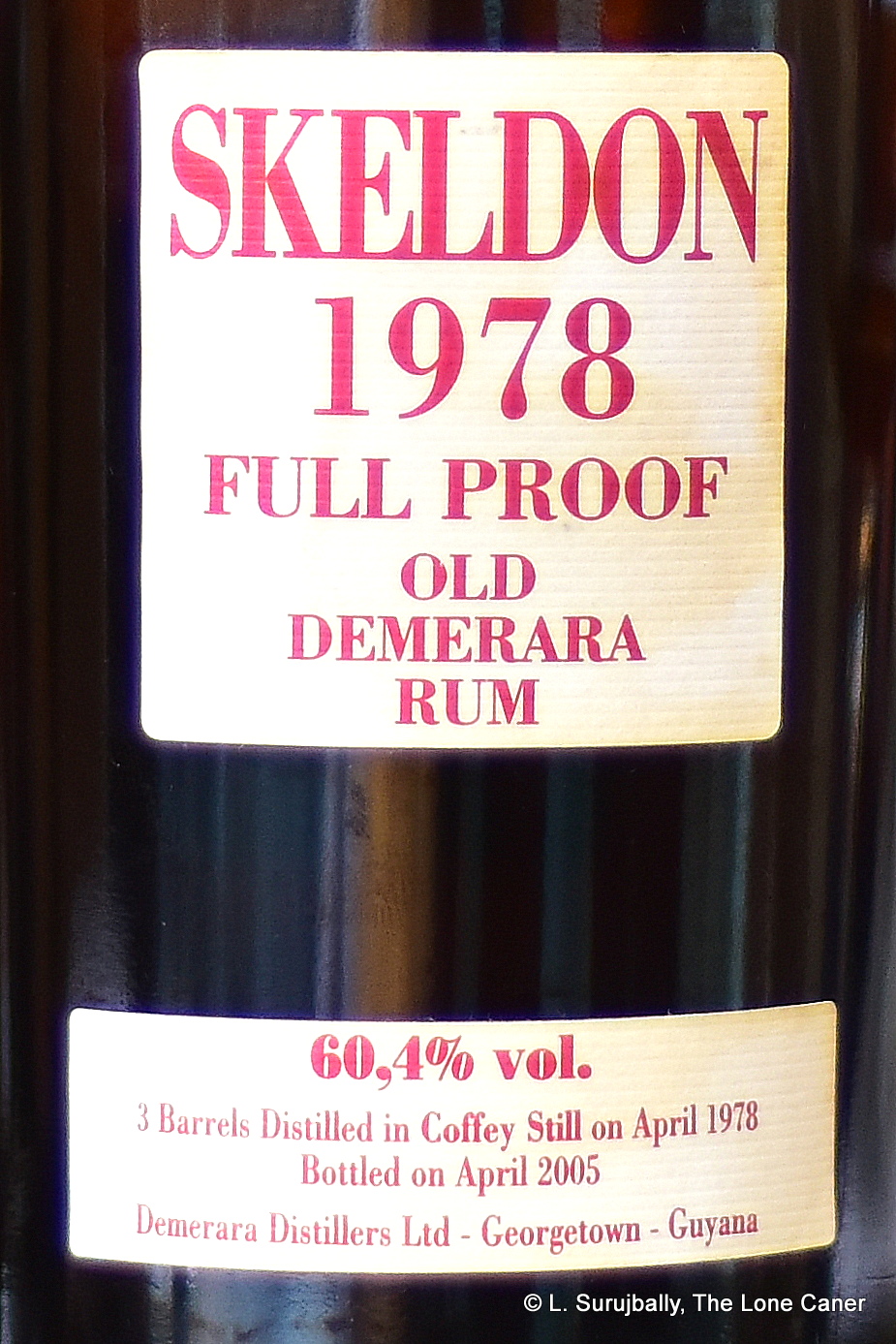 The history of the Skeldon 1978 bottling from a long-dismantled Savalle still is an odd one: the plantation is on the far eastern side of Guyana and the distillery has been shut down since 1960, though the original sugar factory’s remains continue to moulder away there, now replaced by a modern white elephant. It’s possible that the Savalle still which made it was taken elsewhere (Uitvlugt is the unconfirmed suspect) and this distillate hails from there rather than Skeldon — but certainly the “SWR” barrels ended up at Diamond, where Luca saw them gathering dust in the warehouse and convinced Yesu Persaud (the chairman of DDL at the time) to part with them. The 4-barrel 544-bottle outturn of the
The history of the Skeldon 1978 bottling from a long-dismantled Savalle still is an odd one: the plantation is on the far eastern side of Guyana and the distillery has been shut down since 1960, though the original sugar factory’s remains continue to moulder away there, now replaced by a modern white elephant. It’s possible that the Savalle still which made it was taken elsewhere (Uitvlugt is the unconfirmed suspect) and this distillate hails from there rather than Skeldon — but certainly the “SWR” barrels ended up at Diamond, where Luca saw them gathering dust in the warehouse and convinced Yesu Persaud (the chairman of DDL at the time) to part with them. The 4-barrel 544-bottle outturn of the 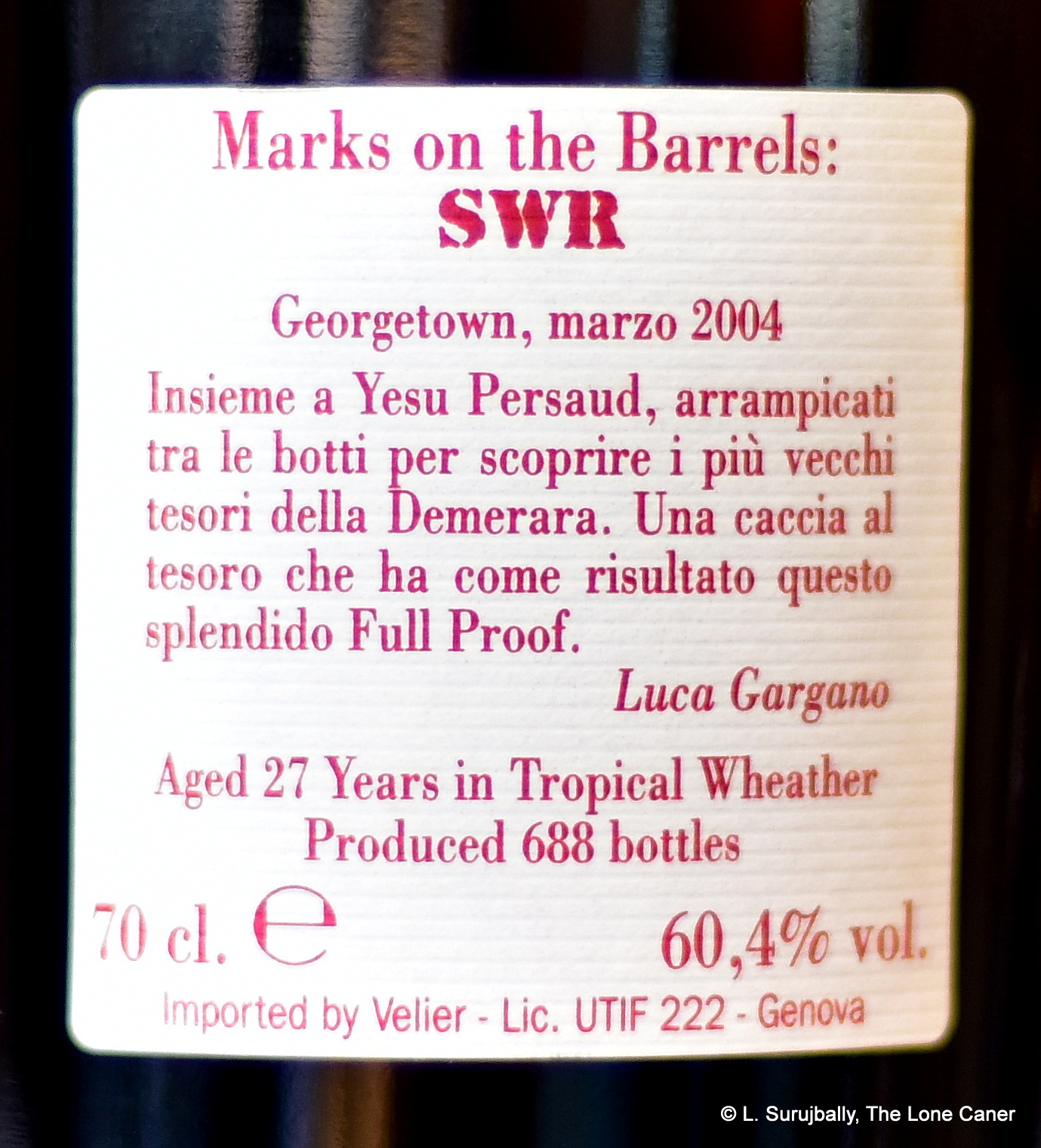 Although things at the Tasting were going faster than I was able to write (and listen), this was not a rum I wanted to be hurried with after waiting so long, and certainly it’s one with which to take one’s time. It unfolded gradually on the tongue, almost languorously and even at 60.4%, it was amazing how entirely under control it remained the entire time. Most of the tastes in the nose carried over, primarily anise, coffee and bitter chocolate, oranges, strong black tea, cumin, and that lentil soup / beef broth meatiness I remarked on earlier. But there were also more muted, subtler hints of papaya and fleshy fruits, aromatic tobacco, flambeed bananas and salty caramel. A rather dry note of over-roasted nuts came into play at the back end, a slight indeterminate bitterness (something like a manager who can never compliment your work without a closing criticism), but fortunately the muskier fruit and creamy notes ameliorated it for the most part. And while the finish was more a last bow on the stage than a true epilogue that added a few extra fillips of flavour, it was in no way disappointing, leaving me with a memory of coffee, nougat, salt caramel ice cream, fruits, raisins, licorice and light chocolate oranges.
Although things at the Tasting were going faster than I was able to write (and listen), this was not a rum I wanted to be hurried with after waiting so long, and certainly it’s one with which to take one’s time. It unfolded gradually on the tongue, almost languorously and even at 60.4%, it was amazing how entirely under control it remained the entire time. Most of the tastes in the nose carried over, primarily anise, coffee and bitter chocolate, oranges, strong black tea, cumin, and that lentil soup / beef broth meatiness I remarked on earlier. But there were also more muted, subtler hints of papaya and fleshy fruits, aromatic tobacco, flambeed bananas and salty caramel. A rather dry note of over-roasted nuts came into play at the back end, a slight indeterminate bitterness (something like a manager who can never compliment your work without a closing criticism), but fortunately the muskier fruit and creamy notes ameliorated it for the most part. And while the finish was more a last bow on the stage than a true epilogue that added a few extra fillips of flavour, it was in no way disappointing, leaving me with a memory of coffee, nougat, salt caramel ice cream, fruits, raisins, licorice and light chocolate oranges.
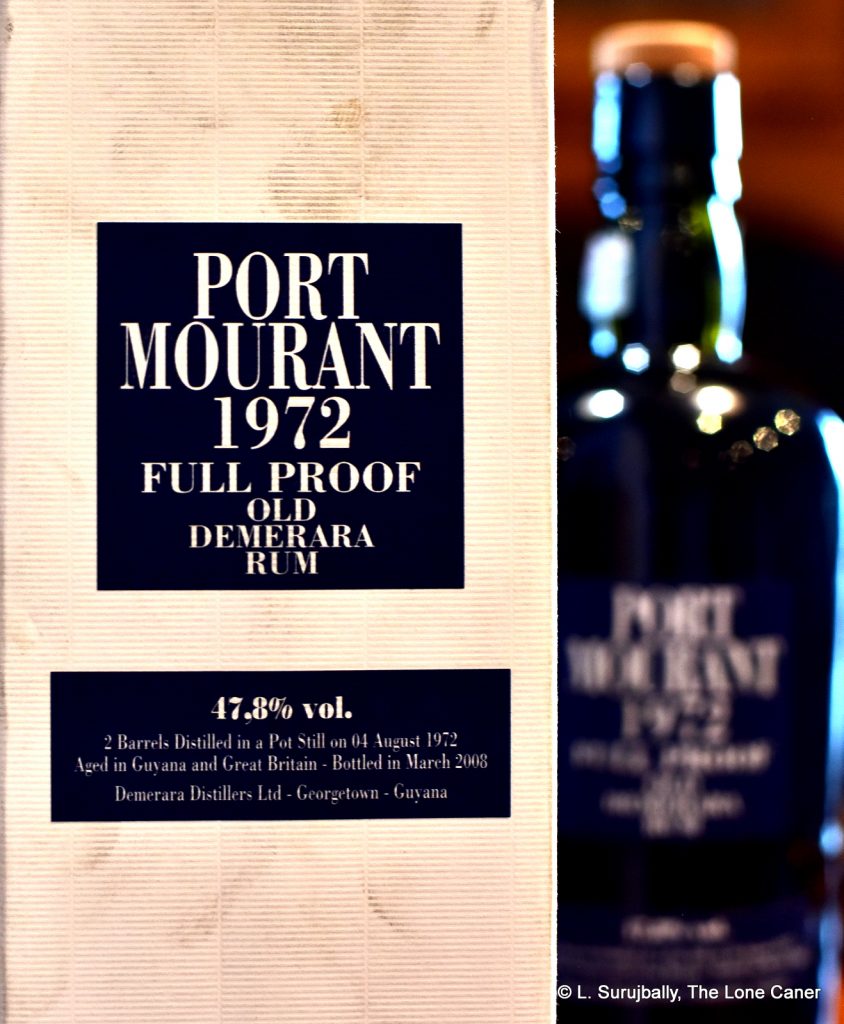 The nose made an immediate and emphatic response: “Here’s how.” I had exasperatedly grumbled
The nose made an immediate and emphatic response: “Here’s how.” I had exasperatedly grumbled 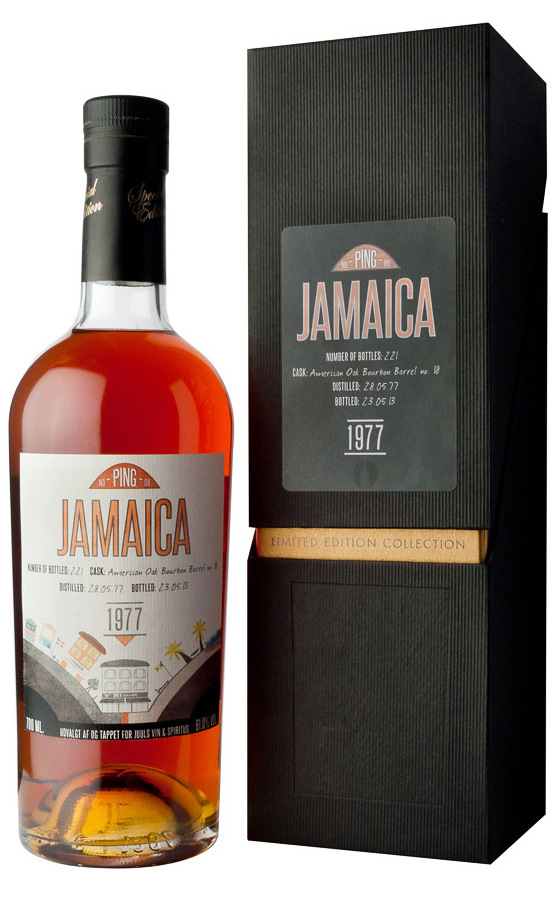
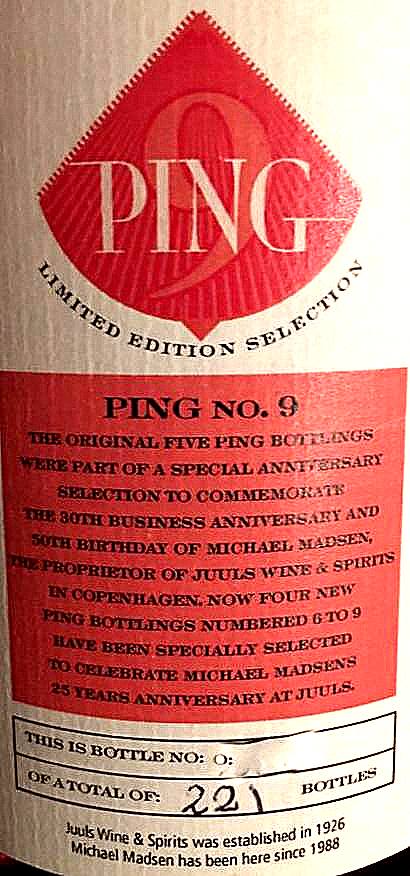 Say what you will about tropical ageing, there’s nothing wrong with a good long continental slumber when we get stuff like this out the other end. Again it presented as remarkably soft for the strength, allowing tastes of fruits, light licorice, vanilla, cherries, plums, and peaches to segue firmly across the tongue. Some sea salt, caramel, dates, plums, smoke and leather and a light dusting of cinnamon and florals provided additional complexity, and over all, it was really quite a good rum, closing the circle with a lovely long finish redolent of a fruit basket, port-infused cigarillos, flowers and a few extra spices.
Say what you will about tropical ageing, there’s nothing wrong with a good long continental slumber when we get stuff like this out the other end. Again it presented as remarkably soft for the strength, allowing tastes of fruits, light licorice, vanilla, cherries, plums, and peaches to segue firmly across the tongue. Some sea salt, caramel, dates, plums, smoke and leather and a light dusting of cinnamon and florals provided additional complexity, and over all, it was really quite a good rum, closing the circle with a lovely long finish redolent of a fruit basket, port-infused cigarillos, flowers and a few extra spices.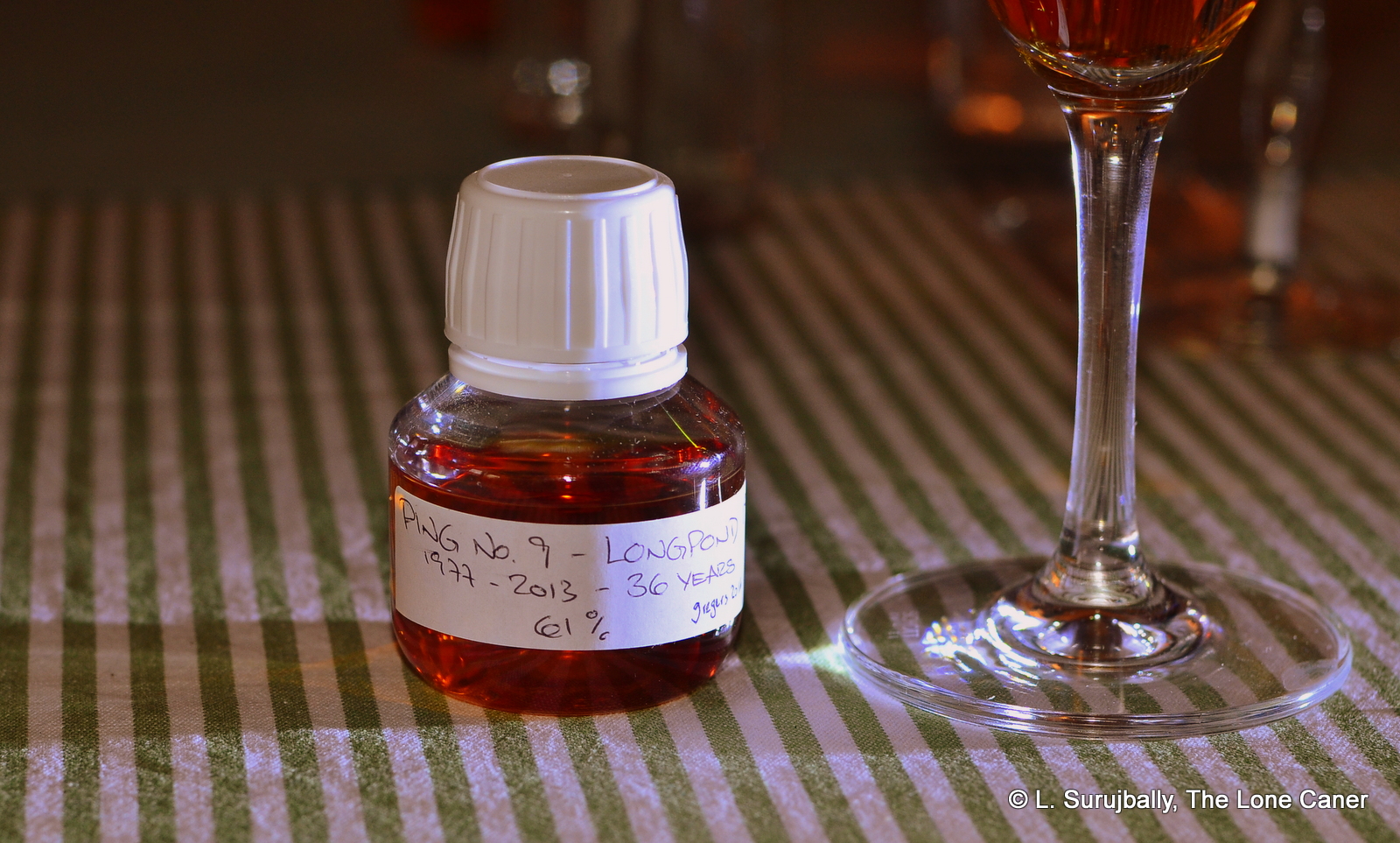
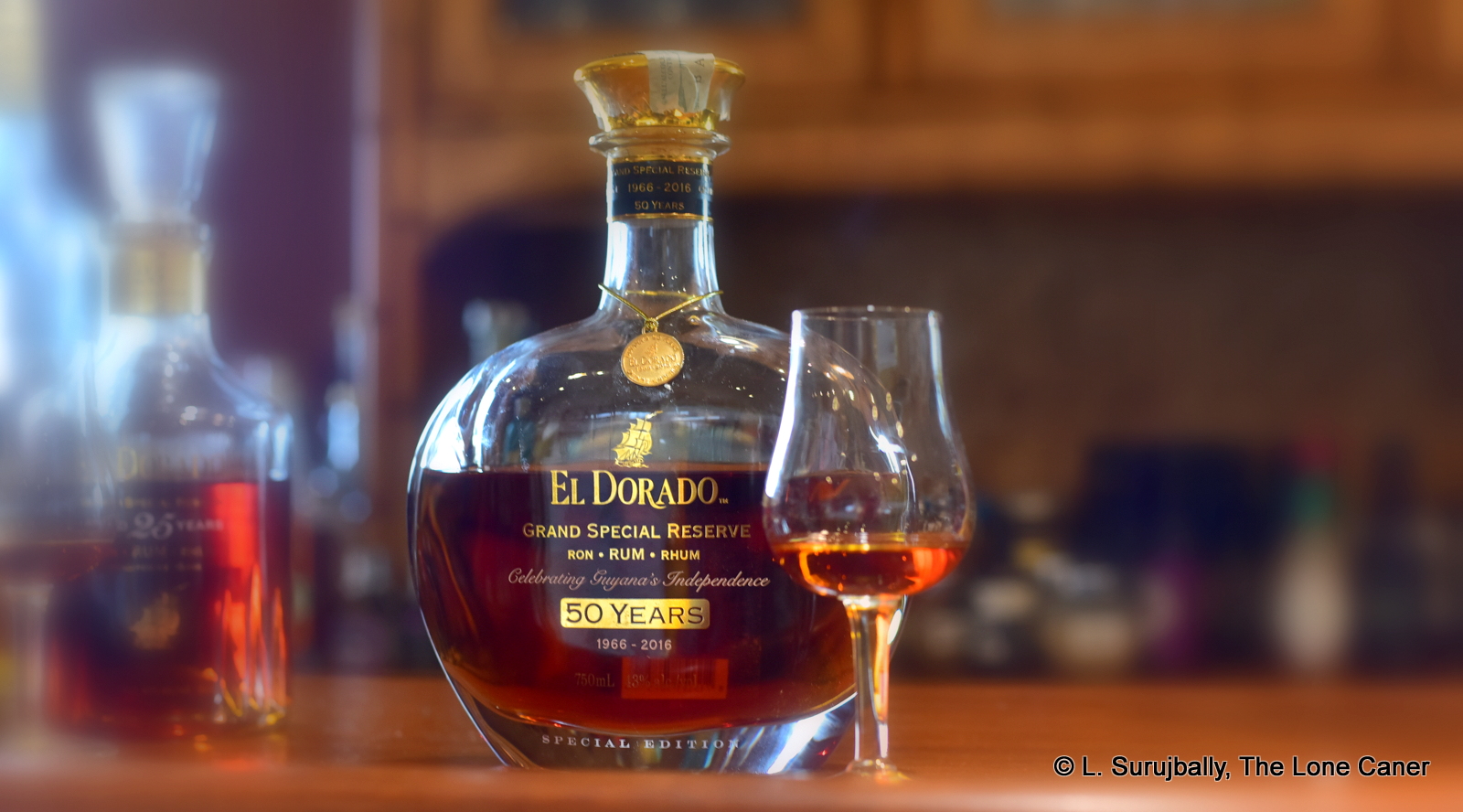
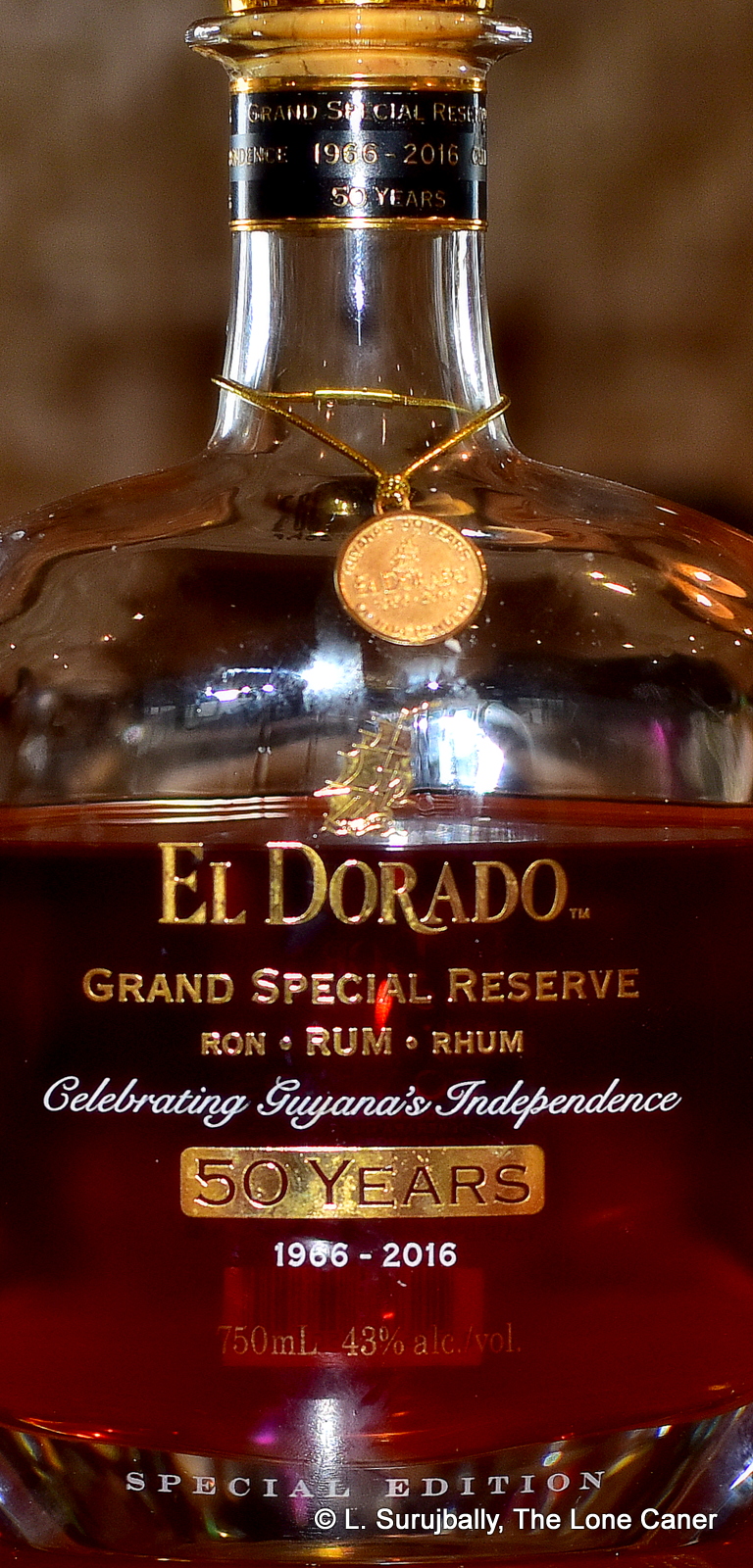 Which brings us to the El Dorado 50th Anniversary offering, with 600 produced bottles selling for a muscular US$3500 or so (each), and bottled at a less beefy 43%, meant to celebrate Guyana’s 50th anniversary of independence in 2016, just as the Appleton 50 did a few years earlier. It is not, as some websites state, a fifty year old rum (the bottle itself notes “50 years” in bold writing which doesn’t help) — by strict definition it is a 33 year old. The Whisky Exchange, which I have no reason to doubt, notes it as being a blend of rums: 65% from 1966, 25% between 1966 and 1976 and another 10% from 1983….so the idea that each of these aged components is from a specific still is likely to be a reasonable assumption (I’ve cobbled together various sources on the parts of the blend in “other notes” below).
Which brings us to the El Dorado 50th Anniversary offering, with 600 produced bottles selling for a muscular US$3500 or so (each), and bottled at a less beefy 43%, meant to celebrate Guyana’s 50th anniversary of independence in 2016, just as the Appleton 50 did a few years earlier. It is not, as some websites state, a fifty year old rum (the bottle itself notes “50 years” in bold writing which doesn’t help) — by strict definition it is a 33 year old. The Whisky Exchange, which I have no reason to doubt, notes it as being a blend of rums: 65% from 1966, 25% between 1966 and 1976 and another 10% from 1983….so the idea that each of these aged components is from a specific still is likely to be a reasonable assumption (I’ve cobbled together various sources on the parts of the blend in “other notes” below).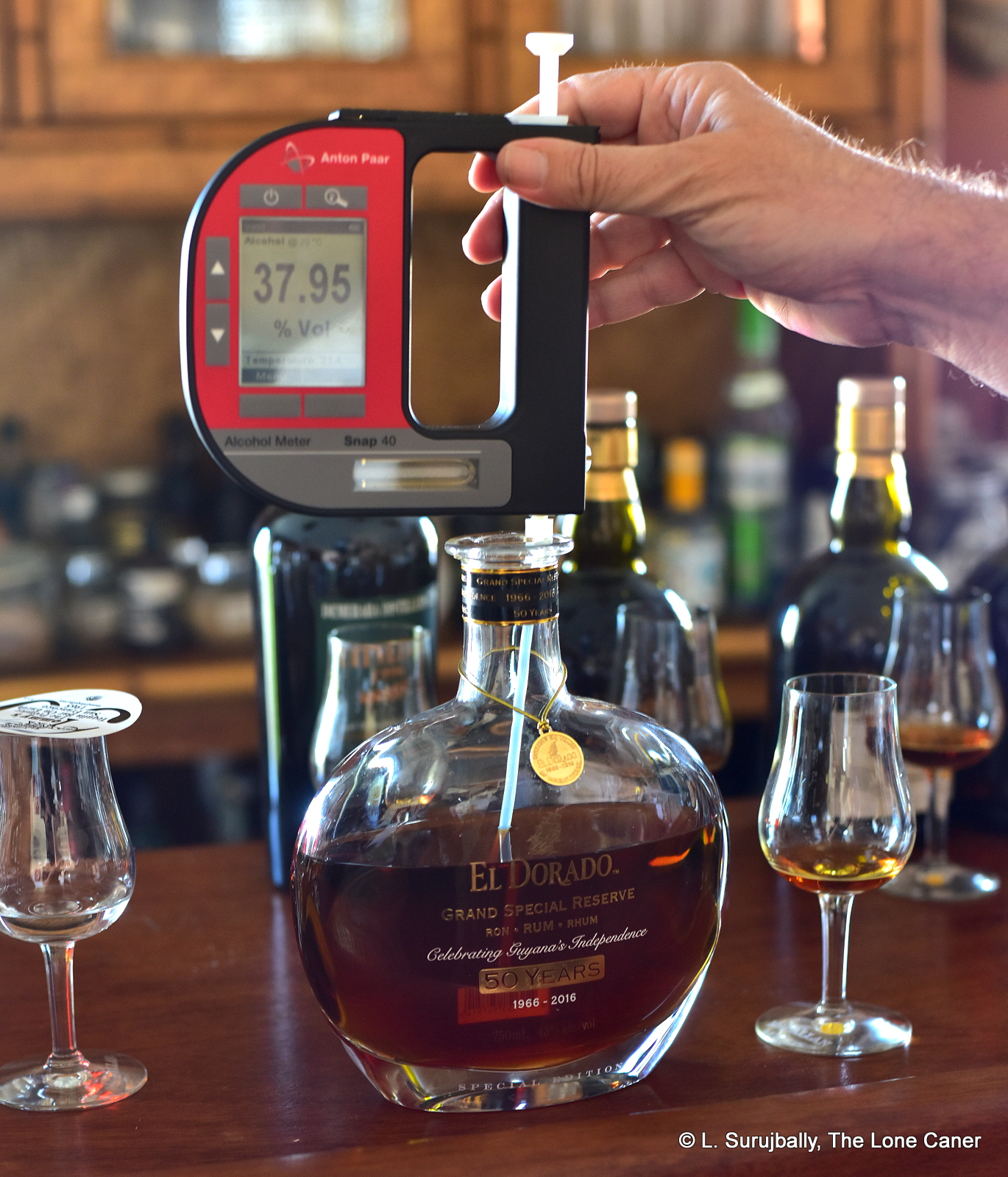
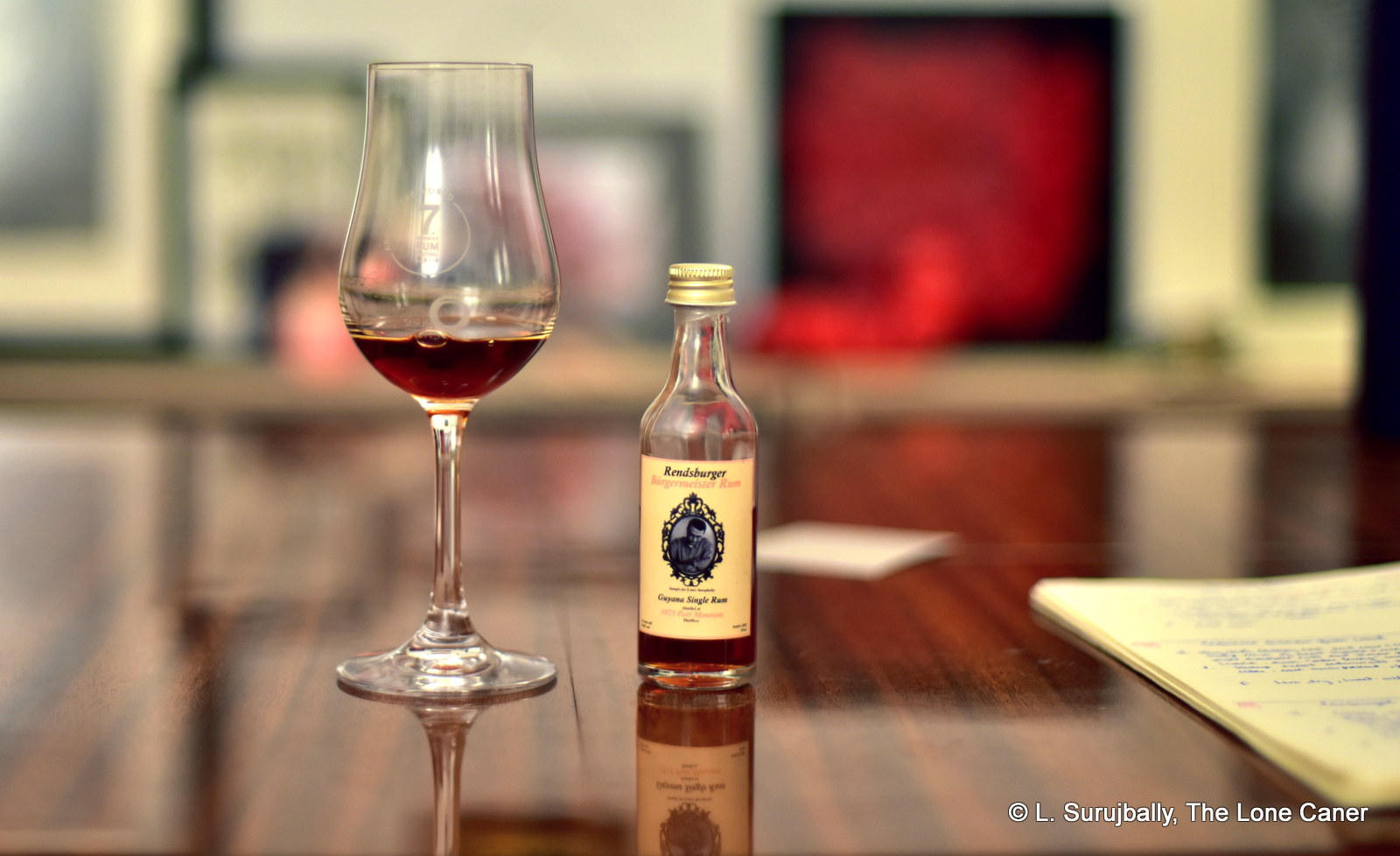
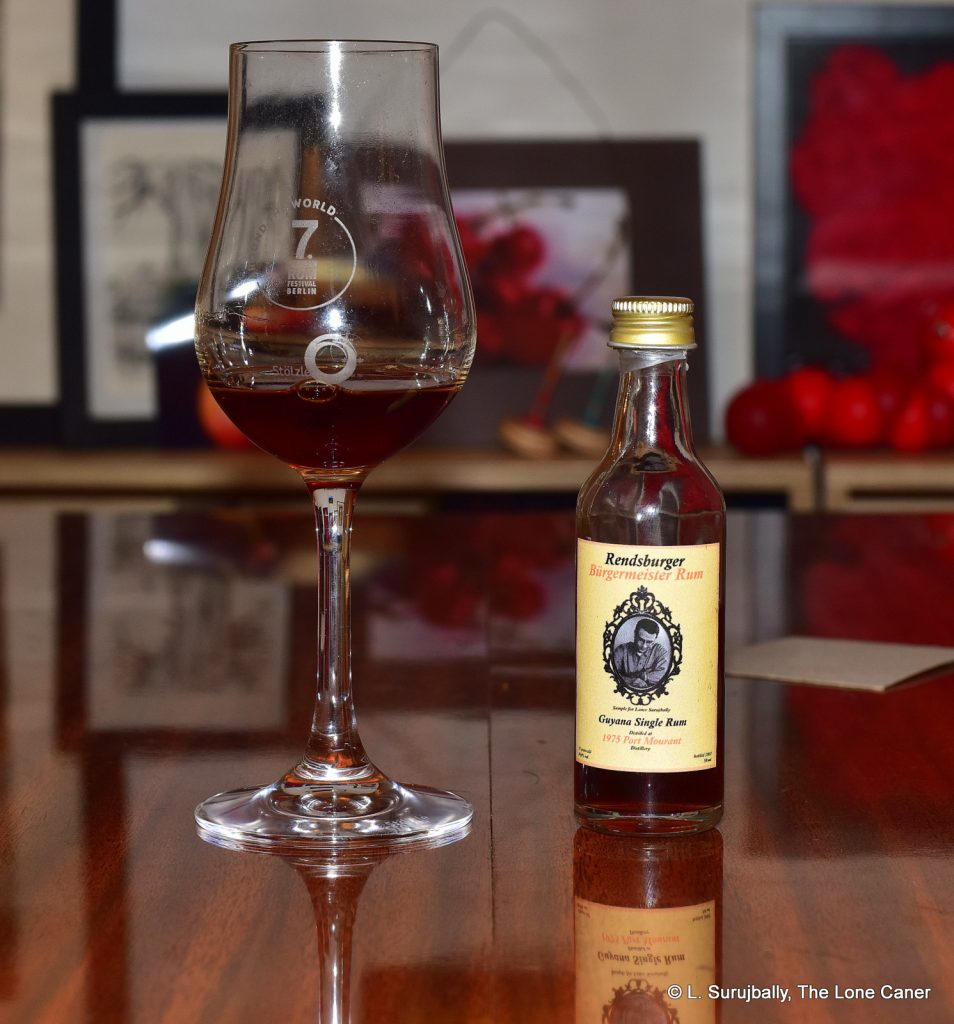 As for the palate, man, I’m in heaven, because I just found another 1975 to add to the pantheon. That same growling, thick richness of the nose segued to the tongue with no pause, no hesitation and no detours. The strength was near perfect – it gave strength without sharpness, allowing all the flavours to march solidly across the stage and present themselves one after the other: licorice, vanilla, caramel, bags of fruits, a little saltiness, biscuits and cereal. The whole thing was warm and thick with dark flavours that never seemed to want to stop showing off and even the oak, which at first I thought started to take on an unhealthy dominance after some minutes (I was actually writing “Mozart just exited the scene and is replaced by Salieri!” before crossing it out), retreated into the background, chilled out, and was (to my relief) content to be a part of the troupe rather than a scene stealing hog. The exemplary and traditional Port Mourant profile finished long, slow, voluptuously and with chocolate, coffee grounds, some oak, vanilla, raisins and anise, and overall, my take was it was simply one of the Grand Old Men of the plantation and the still.
As for the palate, man, I’m in heaven, because I just found another 1975 to add to the pantheon. That same growling, thick richness of the nose segued to the tongue with no pause, no hesitation and no detours. The strength was near perfect – it gave strength without sharpness, allowing all the flavours to march solidly across the stage and present themselves one after the other: licorice, vanilla, caramel, bags of fruits, a little saltiness, biscuits and cereal. The whole thing was warm and thick with dark flavours that never seemed to want to stop showing off and even the oak, which at first I thought started to take on an unhealthy dominance after some minutes (I was actually writing “Mozart just exited the scene and is replaced by Salieri!” before crossing it out), retreated into the background, chilled out, and was (to my relief) content to be a part of the troupe rather than a scene stealing hog. The exemplary and traditional Port Mourant profile finished long, slow, voluptuously and with chocolate, coffee grounds, some oak, vanilla, raisins and anise, and overall, my take was it was simply one of the Grand Old Men of the plantation and the still. 